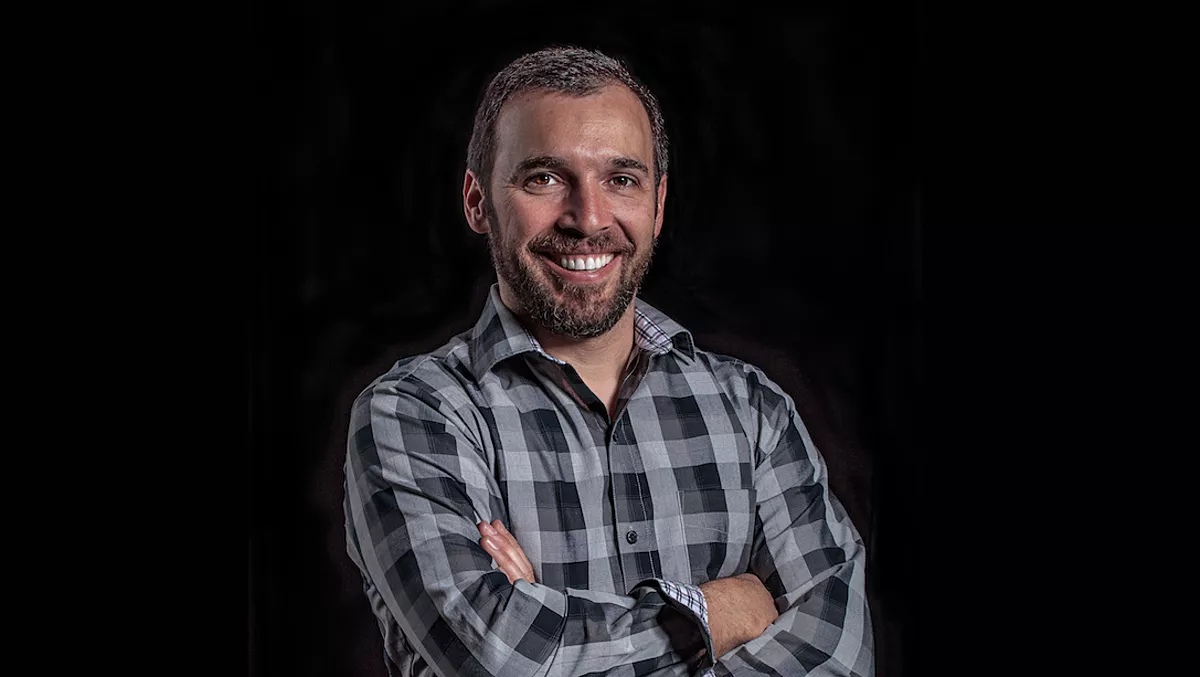
Customer experiences are key in developing relationships, and Adobe is at the forefront of building the tools allowing businesses to do this.
Adobe's solutions continue to change how creatives work and how this work is used to incite wonder and weave brand identity.
TechDay spoke to Adobe executive creative director Adam Morgan about why design should lead the way in business decisions and how computational design will be the future of advertising.
Ninety-four percent of all first impressions are designer-led and design-led businesses do better by 210 percent.
Ten years ago, everything moved to a design approach. Studies have been showing that in a world of abundance, it's no longer about creating a better mousetrap, it's about, ‘How cool does it look, and how well-designed is it so people care more about the designer'?
When I was writing my book about how you prove the value of creativity (Sorry Spock, emotions drive business), I found some hard science and neuroscience about what's happens with creativity.
When you break down those elements, what happens in the human brain is you need an anomaly. You need something that's unique, and you need an emotion, which is really what we mean when we say a creative experience - it's really an emotional experience.
And if you have those two things - something unique and you have emotion present - then your chances of having action (which is business) is very, very high.
Will AI replace human creativity?Creativity will not be taken over and replaced by AI. Inside the human brain, there's a team of rivals, think of it as all these people working against each other.
Our brains are not analytical or logical or routine, because there are different things in our heads that decide which outcome wins every time, even if the same variables come together.
And that's the element of creativity, where we make leaps by combining, extracting all these different things, and a machine only learns to follow a programme and learn more patterns, and recreate those patterns.
It's not logical why one part of the brain wins over another because we have a team of rivals going on in our head and even we don't know who's going to win the next second.
I feel like the creative human spirit is our ability to be unpredictable and original and come up with things that aren't even a pattern that we've been taught.
How will this affect the future of employment?The old era was the Information Age where knowledge-worker jobs like accountants and lawyers were hot – those are the ones that are most likely to be replaced because they're more linear, whereas creative pursuits of innovation, human ingenuity, and creativity are not going to be replaced, because it takes those leaps.
Even having done this for 24 years, I can't tell you where an idea is going to come from, and I have to fill the well and give myself more fodder and have elements there for making those connections and breaking things apart in a unique way.
How can design promote both the standardisation and the individuality needed in a cohesive brand identity?If you look at the trends of design, it used to be one-to-many, where we design a print ad or a video, and then send it out across all the channels.
Now, there's the idea of content velocity, and we have to create more and more material for more and more channels. We don't have the luxury anymore of designing a custom experience for every single ad or every single screen.
So we've moved past one-to-many to one-to-few and now the future is going to be one-to-one.
As content velocity has increased, we're going to be moving more to computational design.
For people who are used to the old methods, the idea of the loss of control can be a little scary because in computational design, instead of building one entire print ad or web page, we're going to build components.
We're going to build a library, we're going to build all those parts and pieces. And it's not just design, it's also writing - we'll write headlines, we'll write chunks of copy, we may even do video and it's a very modular system.
Then through AI or a marketer, we will bring those parts together to create custom experiences on a one-to-one level, so the result is very customised.
The way we design will be different.
We'll just have to be doing it very systematically in building each of those pieces, in the hope and knowing that when no matter which way it's organised, it'll always look good, sound good, and feel good. So we still have the control. It's just pre-control, not final outflow control.
And that's how we can keep individualisation now in the huge system.
How does computational design affect the dynamic between businesses and creatives?It'll be great for businesses and for designers in that once you've built the machine and have the structure in place, think how fast you can move. You can be consistent with your look and feel across every surface, even ones that we don't even know yet.
I don't have to resize every little part and piece - that saves my time and takes me from being a set of hands to being able to think about things strategically.
Creatives can look at the big picture and be an experience designer, rather than a banner ad designer.
Designers won't have long timelines, they can go faster, and they can be on every platform. Their brand is consistent so that everyone knows when they're seeing it, it's consistent from screen to screen.
So the benefit of speed and continuity is huge.
